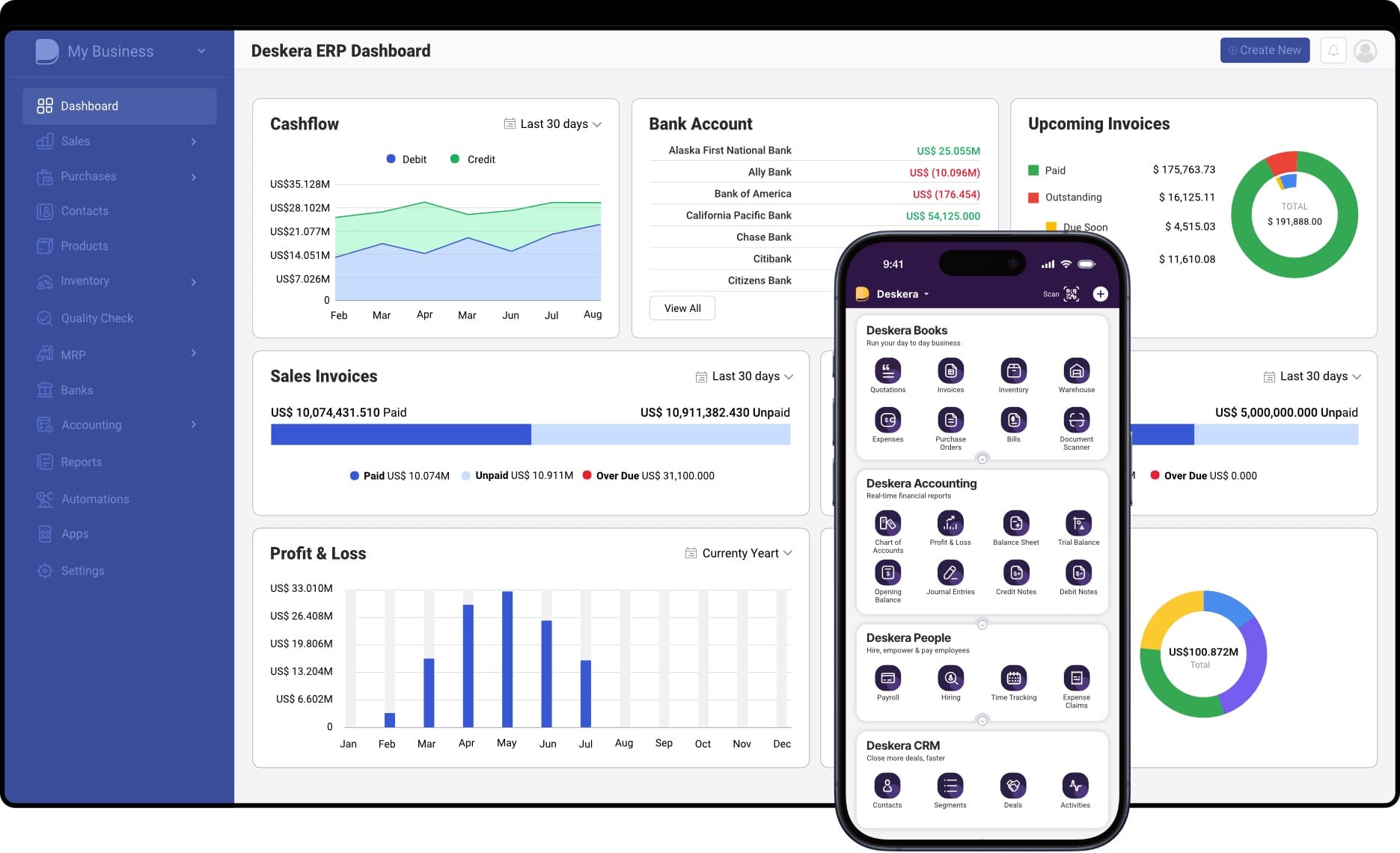In today’s competitive business landscape, managing enterprise assets efficiently is no longer just an operational necessity—it’s a strategic advantage. Enterprise Asset Management (EAM) provides organizations with a systematic approach to oversee the lifecycle of their physical assets, from acquisition and operation to maintenance and disposal. By leveraging EAM, businesses can enhance asset performance, reduce operational costs, and ensure regulatory compliance, ultimately driving long-term profitability.
The global EAM market is witnessing remarkable growth, projected to expand from approximately $6.6 billion in 2025 to over $21 billion by 2035, reflecting a robust compound annual growth rate (CAGR) of about 11.26%. This surge is largely fueled by the increasing adoption of technologies such as the Internet of Things (IoT), Artificial Intelligence (AI), and cloud-based EAM solutions. Organizations are increasingly focusing on predictive maintenance and data-driven asset management strategies to prevent breakdowns, optimize performance, and maximize the return on their investments.
Effective enterprise asset management not only safeguards valuable equipment but also empowers decision-makers with actionable insights. By integrating asset data across departments, organizations can streamline maintenance schedules, reduce downtime, and forecast future operational needs more accurately. This holistic approach ensures that assets deliver maximum value throughout their lifecycle, supporting both operational efficiency and strategic growth.
Solutions like Deskera ERP take EAM to the next level by offering centralized asset management, predictive maintenance scheduling, and real-time performance analytics. With mobile accessibility and seamless integration with other enterprise systems, Deskera ERP helps organizations monitor, optimize, and maintain assets efficiently, allowing businesses to stay ahead in an increasingly technology-driven environment.
What is Enterprise Asset Management (EAM)?
Enterprise Asset Management (EAM) refers to the combination of software, systems, and services that organizations use to manage, maintain, and control their operational assets and equipment. The primary goal of EAM is to optimize the quality, performance, and utilization of assets throughout their lifecycle—ultimately enhancing productivity, increasing uptime, and reducing operational costs. In essence, EAM ensures that every asset contributes to business efficiency and long-term value creation.
At its core, EAM can be seen as an extension of an organization’s broader Asset Lifecycle Management (ALM) strategy. It deploys a structured framework of technologies, processes, and best practices that integrate multiple business functions such as work management, asset maintenance, energy management, supply chain operations, and environmental, health, and safety (EHS) compliance. This comprehensive approach helps organizations maintain visibility and control over every asset, from initial procurement to decommissioning or disposal.
Without an effective EAM system, organizations face significant challenges, including unplanned downtime, limited asset visibility, and higher operational expenses. According to a 2024 Splunk report, downtime costs Global 2000 companies an average of USD 200 million annually, amounting to 9% of total profits. These disruptions not only strain financial performance but also affect service quality, employee safety, and customer satisfaction—making proactive asset management an essential component of business continuity.
In the era of the Internet of Things (IoT) and Artificial Intelligence (AI), EAM has evolved into a data-driven discipline. Modern EAM systems leverage connected sensors, predictive analytics, and cloud-based platforms to offer real-time insights into asset health and performance. This level of precision enables organizations to make informed decisions, optimize maintenance schedules, and extend the lifespan of critical equipment.
Assets managed under EAM include a wide range of physical and digital resources—such as buildings, machinery, fleets, IT infrastructure, and even intangible assets like software, patents, and trademarks. With the global value of intangible assets reaching USD 79.4 trillion in 2024, businesses are expanding their EAM strategies to safeguard both tangible and intellectual capital.
Furthermore, enterprises in regulated industries—such as healthcare, utilities, and manufacturing—rely on EAM to maintain compliance with industry standards and government regulations. From monitoring environmental impact to adhering to workplace safety laws, EAM frameworks provide transparency and accountability throughout asset operations.
Increasingly, organizations are adopting cloud-based EAM software, which allows them to manage assets across multiple locations, analyze data in real time, and scale operations with greater flexibility. This digital transformation is driving market growth, with the EAM sector projected to reach USD 13.7 billion by 2032, growing at a 10.9% CAGR, according to Fortune Business Insights.
Key Features of EAM Software
Enterprise Asset Management (EAM) software provides organizations with the tools they need to optimize asset performance, reduce operational costs, and improve decision-making. While features can vary depending on organizational priorities, the most effective EAM solutions share a set of central capabilities that help enterprises manage assets throughout their lifecycle.
Workflow Management
EAM platforms streamline and centralize maintenance activities, ensuring that both planned and unplanned work is tracked from initial request to completion. This includes documenting labor, materials, and costs associated with each task, providing a full view of asset-related expenditures and productivity. By automating workflows, EAM enables teams to prioritize urgent issues, reduce administrative overhead, and maintain consistent operational processes.
Predictive Capabilities
Modern EAM systems go beyond reactive repairs. They enable preventive maintenance by scheduling routine checks in advance and predictive maintenance by analyzing data to forecast imminent equipment failures. Leveraging IoT sensors, AI, and historical performance trends, predictive capabilities allow organizations to prevent downtime, reduce maintenance costs, and extend the useful life of assets.
Maintenance Planning and Scheduling
EAM software provides tools to visualize work orders, preventive maintenance schedules, and timelines using features like Gantt charts or calendar views. Automated assignment and prioritization of tasks reduce manual workload for dispatchers, while ensuring critical assets receive timely attention. This structured approach increases operational efficiency and minimizes the risk of overlooked maintenance tasks.
Supply Chain Integration
Effective EAM platforms connect asset management with inventory and supply chain operations. They track spare parts, critical components, and materials required for maintenance, helping organizations respond quickly to equipment failures. Integration with IoT and analytics enables proactive supply chain planning, preventing bottlenecks, shortages, or delays that could impact asset performance.
Compliance Management
EAM systems support adherence to health, safety, and environmental regulations, as well as corporate governance standards. Features such as incident tracking, corrective action traceability, and change management help organizations document compliance and maintain regulatory readiness. Robust reporting ensures teams have the visibility and documentation needed to address audits, inspections, and risk assessments effectively.
Mobility and Remote Access
Modern EAM platforms leverage mobile technology to improve field operations. Technicians can capture data using barcodes, RFID, cameras, or voice-to-text tools, update work orders remotely, and access information offline. Mobility enhances collaboration, speeds up maintenance activities, and ensures accurate, real-time data capture even in distributed or challenging operational environments.
Advanced Analytics and AI
EAM software increasingly integrates descriptive, diagnostic, and prescriptive analytics, often powered by AI. These insights help identify inefficiencies, optimize maintenance schedules, and suggest operational changes to extend asset life. By analyzing historical and real-time data, organizations can make informed decisions about asset replacement, resource allocation, and operational strategies.
Cloud Integration
Many EAM solutions are available as cloud-based, hybrid, or SaaS deployments, offering greater flexibility, scalability, and cost control. Cloud integration allows organizations to manage assets across multiple locations, access real-time data from anywhere, and reduce reliance on on-premise IT infrastructure—all while ensuring secure and centralized data management.
Importance of EAM for Businesses
Enterprise Asset Management (EAM) plays a critical role in helping organizations track, assess, manage, and optimize the quality and reliability of their assets. In asset-intensive industries—such as manufacturing, energy, utilities, and transportation—businesses often manage hundreds, thousands, or even millions of assets across multiple locations.
A cohesive EAM strategy allows these organizations to proactively care for their equipment throughout its lifecycle, rather than reacting to malfunctions and breakdowns as they occur. By centralizing data, enhancing visibility, and leveraging predictive insights, EAM empowers enterprises to make informed decisions that improve asset reliability, safety, and profitability.
Centralizing Asset Information
A key advantage of EAM lies in its ability to centralize all asset-related data into a unified system. Many EAM platforms integrate with Computerized Maintenance Management Systems (CMMS), giving maintenance managers instant access to vital asset information—such as location, maintenance history, condition, and responsible personnel.
This centralized approach enhances transparency and traceability, enabling teams to view both historical performance data and real-time operational insights. As a result, decision-makers can coordinate maintenance tasks more efficiently, reduce duplication of effort, and improve accountability across departments.
Preventing Issues Before They Arise
Traditional maintenance approaches often wait until a breakdown occurs before taking corrective action. EAM transforms this reactive mindset into a preventive and predictive maintenance strategy. Advanced EAM systems use IoT sensors, data analytics, and automation to detect early signs of wear and performance degradation.
For instance, maintenance teams may receive alerts when a piece of equipment reaches a predefined usage threshold or performance deviation, signaling that service or replacement is required. These proactive measures not only reduce downtime but also ensure compliance with asset-related contracts and operational standards, helping businesses avoid costly disruptions.
Monitoring Assets with Greater Precision
Modern EAM platforms enable real-time, remote asset monitoring through AI, IoT, and advanced analytics. These systems collect and analyze data from sensors, WiFi-enabled trackers, GPS devices, QR codes, and RFID tags to detect anomalies, forecast potential failures, and ensure that aging systems are updated regularly.
By aggregating data across departments and locations, EAM enhances situational awareness and provides maintenance teams with actionable insights into asset performance and condition. This level of precision allows enterprises to optimize maintenance schedules and allocate resources more effectively.
Managing and Mitigating Risks
EAM systems often include built-in risk management capabilities designed to anticipate and address potential issues before they escalate. These tools can identify vulnerabilities—such as declining performance in a key production asset or a cybersecurity threat—and recommend preventive measures.
For example, if a central mainframe shows signs of instability, EAM software may suggest setting up a redundant backup system to ensure business continuity.
In addition to equipment health, EAM also supports risk assessments related to safety, compliance, and sustainability, helping organizations meet stringent Environmental, Health, and Safety (EHS) requirements.
AI and machine learning further enhance these functions by improving accuracy and predictive power in identifying emerging risks.
Maximizing Asset Utilization
One of the most valuable benefits of EAM is the ability to maximize the utilization and return on investment (ROI) of every asset. By analyzing historical and real-time performance data, organizations can make informed decisions about maintenance frequency, asset replacement, and operational adjustments.
For example, data may reveal that performing routine maintenance every three months extends the lifespan of certain machinery by several years, while reducing unnecessary service for others can save costs. This balance ensures that businesses achieve optimal asset performance while maintaining financial efficiency.
Enhancing Data-Driven Decision-Making
EAM empowers enterprises to move beyond intuition and make strategic, data-backed decisions. By integrating data from sensors, maintenance logs, and performance reports, EAM platforms provide leaders with a comprehensive view of asset health and operational trends.
These insights help forecast future maintenance needs, allocate budgets effectively, and identify underperforming equipment for replacement or optimization.
Furthermore, EAM analytics can highlight patterns such as recurring issues or inefficiencies, allowing organizations to refine their processes and investment priorities. This level of intelligence turns asset management into a strategic enabler of long-term growth and innovation.
Consolidating Operational Applications
EAM provides a single, integrated framework for managing all asset types—physical and digital—across an enterprise. By consolidating multiple operational applications, EAM promotes consistency in asset data, workflows, and reporting.
This unified approach ensures that departments such as maintenance, finance, and operations align around shared data pipelines and objectives. The result is improved collaboration, reduced data silos, and more coherent asset management strategies that drive efficiency across the organization.
Benefits of Enterprise Asset Management
Implementing Enterprise Asset Management (EAM) delivers tangible business benefits that go beyond maintaining assets. By providing a holistic approach to asset lifecycle management, EAM enhances operational performance, strengthens strategic decision-making, and improves overall organizational resilience.
Increased Return on Assets (ROA)
EAM helps organizations maximize the value of their assets by ensuring they operate efficiently and reliably. Optimized utilization and extended lifecycles reduce the need for premature replacements, improving return on investment and lowering capital expenditure over time.
Enhanced Productivity
By minimizing unplanned downtime and streamlining maintenance processes, EAM allows employees to focus on core business activities. Automated workflows and centralized information reduce administrative burden, enabling teams to respond quickly to issues and maintain consistent operational output.
Cost Efficiency and Waste Reduction
EAM provides insights into maintenance costs, energy consumption, and resource usage, helping organizations reduce unnecessary spending. Predictive maintenance prevents expensive repairs, inventory tracking avoids overstocking, and optimized scheduling ensures resources are used efficiently.
Improved Asset Reliability and Performance
With continuous monitoring and predictive analytics, EAM enhances asset reliability, reduces failures, and ensures optimal performance. Organizations can proactively identify weak points and implement measures to keep equipment running smoothly, resulting in higher uptime and consistent service quality.
Data-Driven Strategic Planning
EAM provides actionable insights for long-term planning. By analyzing historical performance, trends, and predictive forecasts, organizations can make smarter investment decisions, prioritize critical assets, and plan capital projects with confidence.
Better Risk Management
EAM helps anticipate potential risks to asset operations, including equipment failures, safety incidents, or regulatory non-compliance. By addressing these proactively, organizations mitigate operational, financial, and reputational risks, ensuring business continuity.
Sustainability and Environmental Impact
Many modern EAM platforms track energy consumption, emissions, and other environmental metrics. Organizations can improve sustainability, optimize resource usage, and meet regulatory and corporate social responsibility goals while reducing operational costs.
Scalability and Operational Flexibility
Cloud-based and mobile EAM systems allow enterprises to manage assets across multiple sites and geographies. This scalability ensures businesses can expand operations without compromising asset performance or data visibility, making it easier to adapt to growth or changing market conditions.
Challenges in Enterprise Asset Management
While Enterprise Asset Management (EAM) offers significant benefits, implementing and maintaining an effective EAM strategy comes with its own set of challenges. Organizations must navigate these hurdles to fully leverage the value of their assets and avoid disruptions in operations.
High Implementation Costs
Deploying an EAM system—especially a comprehensive, cloud-based or AI-enabled solution—requires significant upfront investment. Costs include software licensing, hardware, integration, employee training, and ongoing maintenance. Smaller organizations, in particular, may struggle to justify the initial expense without a clear roadmap for ROI.
Integration with Existing Systems
Many organizations already use multiple systems for finance, inventory, production, and maintenance. Integrating EAM software with these legacy systems can be complex, requiring customized connectors or middleware. Without seamless integration, data silos may persist, reducing the effectiveness of EAM insights and workflows.
Data Accuracy and Management
EAM relies heavily on accurate and up-to-date asset data. Incomplete, outdated, or inconsistent data can lead to poor decision-making, misaligned maintenance schedules, and reduced asset performance. Ensuring data quality requires strong governance, standardization, and ongoing monitoring efforts.
Change Management and Adoption
Implementing EAM often requires changes in processes, roles, and responsibilities across departments. Employees may resist adopting new systems or workflows, especially if they are accustomed to manual or decentralized methods. Successful adoption depends on effective training, leadership support, and clear communication.
Complexity of Asset Environments
Organizations in asset-intensive industries may manage thousands or even millions of assets, each with different maintenance requirements, locations, and compliance needs. Handling such complexity requires sophisticated EAM software, detailed planning, and highly trained personnel.
Regulatory Compliance and Reporting
Highly regulated industries, such as healthcare, energy, and transportation, must ensure that assets meet stringent safety, environmental, and operational standards. EAM systems must track compliance in real-time, generate accurate reports, and adapt to evolving regulations, which can be challenging for organizations without robust frameworks.
Cybersecurity and Data Privacy
Modern EAM platforms often operate in the cloud and integrate with IoT devices, AI analytics, and other digital systems. This connectivity exposes enterprises to potential cybersecurity risks, including data breaches, unauthorized access, or system disruptions. Ensuring secure access and protecting sensitive asset information is a critical challenge.
Scalability and Flexibility Limitations
As businesses grow, EAM systems must scale to accommodate new locations, additional assets, or increased data volume. Some older or less flexible platforms may struggle to support expansion, limiting the organization’s ability to adapt to changing operational needs or technology advancements.
How Deskera ERP Supports Enterprise Asset Management (EAM)

Deskera ERP provides a comprehensive suite of tools that help organizations manage, track, and optimize assets throughout their lifecycle. By integrating asset management with financial, inventory, and procurement processes, Deskera ERP ensures higher asset utilization, reduced downtime, and improved operational efficiency. Its cloud-based and mobile-enabled platform makes it easy to maintain real-time visibility and control over assets across multiple locations.
Fixed Asset Management
Deskera ERP’s Fixed Asset Management module allows organizations to efficiently track and maintain their assets. Key capabilities include:
- Track Asset Location and Condition – Monitor the physical location and operational status of every asset.
- Automate Depreciation Calculations – Automatically compute depreciation using methods like straight-line or declining balance.
- Manage Asset Transfers – Streamline transfers between departments or locations.
- Generate Tax and Accounting Reports – Produce accurate reports for financial accounting and tax purposes.
- Schedule Maintenance and Insurance Renewals – Receive reminders for periodic maintenance and insurance compliance.
Integration with Financial Management
Deskera ERP integrates asset management with financial operations, providing real-time insights and simplifying accounting processes:
- Real-Time Financial Data – Access up-to-date financial information linked to assets.
- Automated Journal Entries – Automatically record asset-related transactions in the general ledger.
- Budgeting and Forecasting – Plan and forecast asset-related expenses and investments.
- Comprehensive Financial Reporting – Generate detailed reports combining financial and asset data.
Inventory and Procurement Integration
The system’s inventory and procurement modules enhance EAM by ensuring assets and their related materials are managed effectively:
- Real-Time Inventory Tracking – Monitor spare parts and maintenance materials in real time.
- Automated Replenishment – Automatically reorder inventory based on predefined thresholds.
- Purchase Order Management – Simplify creation and tracking of purchase orders for maintenance and asset materials.
Mobile Accessibility
Deskera ERP’s mobile features allow maintenance teams to access and update asset information from anywhere:
- Access Asset Information Remotely – View asset details and maintenance history on mobile devices.
- Update Maintenance Records – Record maintenance activities in real time.
- Capture Data On-Site – Use barcodes, QR codes, and voice-to-text for efficient on-site data entry.
Key Takeaways
- Enterprise Asset Management (EAM) is a strategic approach that helps organizations manage physical and digital assets throughout their lifecycle, improving efficiency, reducing downtime, and maximizing asset value.
- Effective EAM software provides workflow management, predictive maintenance, scheduling, supply chain integration, compliance tools, mobile access, advanced analytics, and cloud deployment to optimize asset management processes.
- EAM is essential for businesses to centralize asset data, prevent breakdowns, monitor performance, manage risks, maximize utilization, enhance decision-making, and consolidate operational applications.
- EAM delivers measurable advantages, including increased return on assets, higher productivity, cost efficiency, improved reliability, better strategic planning, risk mitigation, sustainability, and operational scalability.
- Implementing EAM can be complex due to high costs, integration difficulties, data management requirements, employee adoption hurdles, regulatory compliance, cybersecurity risks, and scalability limitations.
- Deskera ERP offers a comprehensive solution with fixed asset management, financial integration, inventory and procurement linkage, and mobile-enabled features, helping organizations track, maintain, and optimize assets efficiently while ensuring compliance and data-driven decision-making.
Related Articles

















